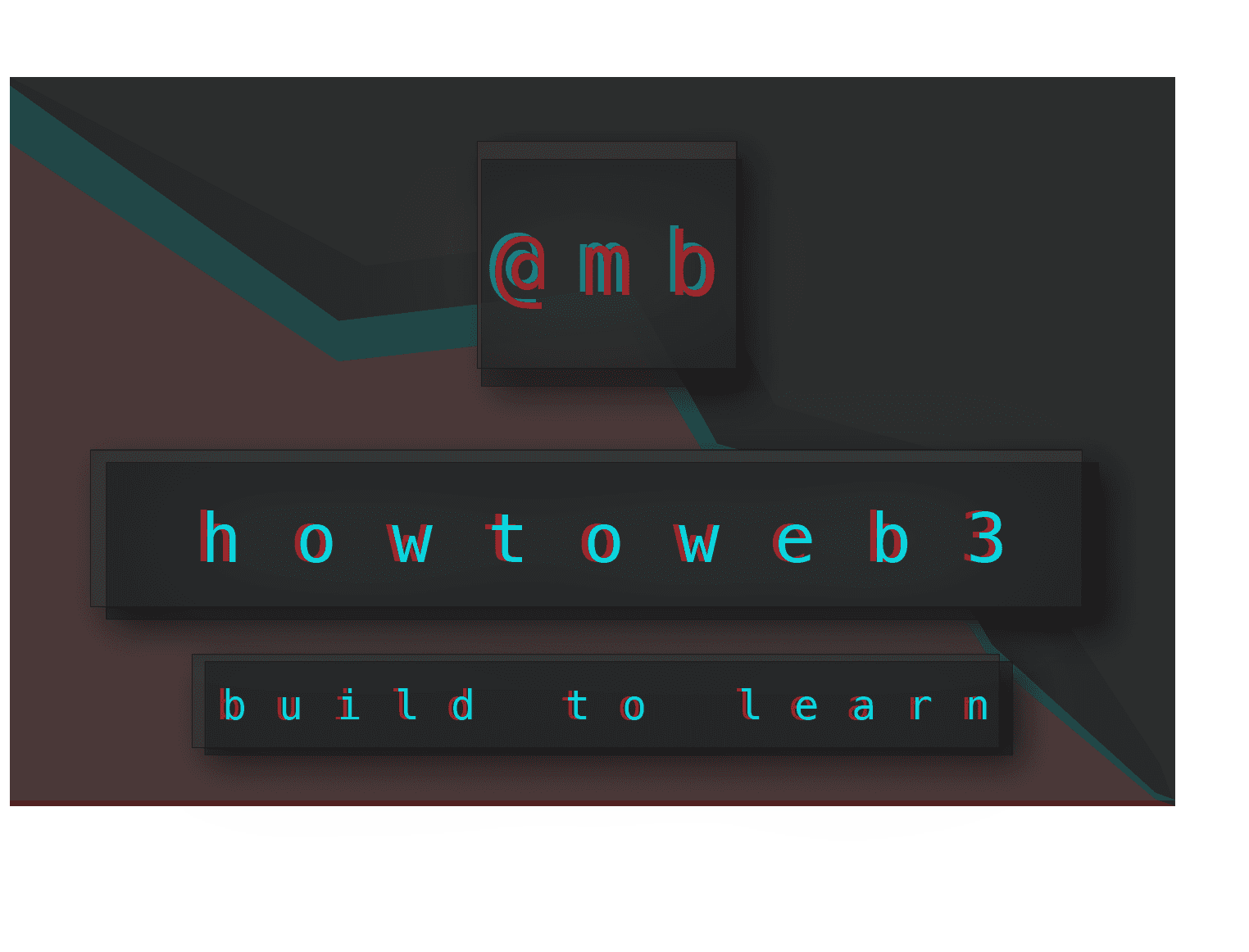Intro シ
Hey everyone - this is Bader Youssef. I'm an aspiring web3 innovator, fullstack developer, and sometimes I like to envision a much better future than what is currently available. Sometimes I make videos about it, sometimes I write about it.
You can find more about me here - this is about how to build on web3, not me ;D I just hope to be a small part in the vessel that delivers and guides people to innovate on new and growing technology.
This series, "How to Web3", is pretty self-explanatory - it will serve as a general guide on how to navigate this new and exciting reality and paradigm shift in as human terms as possible.
Along the way, I will share various paths you can take, wha to learn, what to focus on, and how you can futureproof your existing business for web3, or start your own. Either way, it will provide all information you need on how to begin building in this new world.
Throughout, there is one single key philosophy on approaching new topics that I will encourage:
Build to learn, don't learn to build.
In other words, by going through the natural process of innovating and building, you will learn what is needed far more than attempting to read about how to build. After all, the root of all great things is passion.
This post is a little lengthy, but only because it sets a lot of background on the reasoning, theory, and general philosophy on what web3 is.
What is Web3 (and why does it even matter)
Before we even begin to dive into how and what to build on web3 - what the heck is it exactly? And why does it even matter, will it even matter in in the future?
Web3 is a term coined by Gavin Wood, one of the creators of Ethereum and now creator of Polkadot, which refers to new way of looking at the internet:
An Internet or web application platform that fundamentally reduces the trust to trust service providers - Gavin Wood
So - how is this profound in anyway? To realize this, lets dive into one of the most commonly associated aspects of web3 - Bitcoin and blockchain. By the way, Web3 is not just blockchain or just one technology - but rather a collection of technologies working together for the eventual goal of a more user-controlled Internet.
Bitcoin's original intent was pretty simple - instead of placing the trust with a third-party entity or person; the trust is merely placed within the technology itself.
The consensus algorithm, or how Bitcoin decides what transaction is legit or not, represents this innate trust. In essence, web3 is exact same way, only now including data instead of currency.
Think about it like this - with web2 apps like TikTok or YouTube, once you place your content online, you are no longer in control of it - the service provider (TikTok or Youtube) is. Web3 aims to take the service provider away effectively, just leaving pure interactions between the user and the service.
This begs the question - why does it even matter? While this is subjective, I believe that understanding and building web3 will become a crucial part of our lives. The online world effectively created a new reality for many, where livelihoods, sensitive information, communications, and important relationships all take place. Web3 matters because it gives control back to the user over their own data. If Web2 allowed us to create content, Web3 allows us to control it.
What to expect from this series
With this series, the goal is to showcase a clear path to building or contributing on web3 on ALL levels. Whether that's development, design, writing, or contributing content, use cases - all will be covered in due time.
Expect a lot of hands-on examples and guides, along with explanations behind them.
What to focus on for web3 and the future
Initially, I'll list some things to focus on in terms of reading and learning. Obviously these will be covered in depth over time, however you can get an idea of what is to come from this list:
- Study Polkadot and Cosmos - both represent the future of web3.
- I highly recommend watching Polkadot's Behind the Code.
- Begin experimenting with how smart contracts work beyond just NFT creation.
- Look and learn about Substrate - it basically gives you a way to easily start your own blockchain and web3 project.
- Front end development is huge for blockchain. Most of web3 is backend based - however, it's not very useful if you cannot make useful applications for anyone to use. Learning hybrid frameworks like Ionic or React Native will help loads.
Where to follow - and what's next
I'll call that wraps for now! In the future, expect comprehensive guides on how to put projects together, detailed usecases, as well as providing general direction in this growing and new space.
For updates, I'm active on Twitter, and post on TikTok for short video summaries.
Feel free to contact me about anything at anytime.
Good luck!
-- bader
